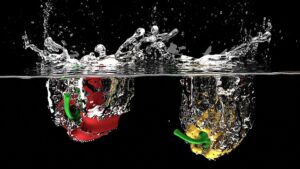Introduction
Protein synthesis is a fundamental process in living organisms, essential for the growth, development, and functioning of cells. It involves the creation of proteins from amino acids, and several organelles play key roles in this intricate process. In this article, we will explore the organelles involved in protein synthesis and their specific functions.
Ribosomes: The Protein Factories
Ribosomes are the primary organelles responsible for protein synthesis. They exist in both prokaryotic and eukaryotic cells, although their structure and location may differ. Ribosomes consist of two subunits, the large and small subunits, which come together during protein synthesis.
These organelles can be found either free in the cytoplasm or attached to the endoplasmic reticulum (ER). The free ribosomes synthesize proteins that are used within the cytoplasm, while the ribosomes attached to the ER are involved in the production of proteins destined for secretion or incorporation into cell membranes.
Endoplasmic Reticulum: The Protein Processing Center
The endoplasmic reticulum (ER) is a complex network of membranous tubules and sacs that are interconnected. It plays a crucial role in protein synthesis, particularly in the folding, modification, and transport of proteins.
There are two types of ER: the rough ER and the smooth ER. The rough ER is studded with ribosomes and is responsible for synthesizing proteins that are destined for secretion or membrane incorporation. These proteins enter the ER lumen, where they undergo modifications such as folding and the addition of sugar molecules (glycosylation). The smooth ER, on the other hand, is involved in lipid metabolism and detoxification.
Golgi Apparatus: Protein Packaging and Sorting
The Golgi apparatus is another organelle involved in protein synthesis, primarily responsible for packaging, modifying, and sorting proteins. It is composed of a stack of flattened membrane sacs called cisternae.
Proteins synthesized in the ER are transported to the Golgi apparatus for further processing. Here, they undergo additional modifications, such as the trimming of sugar molecules and the addition of other molecules, such as phosphate groups. The Golgi apparatus also sorts proteins and packages them into vesicles for transport to their final destinations, either within the cell or outside of it.
Mitochondria: Energy Production and Protein Synthesis
While primarily known for their role in energy production through cellular respiration, mitochondria also participate in protein synthesis. Mitochondria have their own DNA and ribosomes, which are distinct from those found in the cytoplasm.
These mitochondrial ribosomes synthesize a small number of proteins required for the mitochondria’s functioning. These proteins are essential for the production of ATP, the energy currency of the cell. The coordination between the mitochondrial and cytoplasmic protein synthesis is crucial for the proper functioning of mitochondria and overall cellular energy metabolism.
Conclusion
Protein synthesis is a complex process involving several organelles working in harmony. Ribosomes, the protein factories, are at the core of this process, while the endoplasmic reticulum, Golgi apparatus, and mitochondria play critical roles in protein processing, packaging, and energy production. Understanding the functions of these organelles is essential for comprehending the intricacies of protein synthesis and its significance in cellular biology.
References
1. Alberts, B., Johnson, A., Lewis, J., Raff, M., Roberts, K., & Walter, P. (2002). Molecular Biology of the Cell. Garland Science.
2. Lodish, H., Berk, A., Kaiser, C. A., Krieger, M., Scott, M. P., Bretscher, A., . . . Matsudaira, P. (2008). Molecular Cell Biology. W. H. Freeman.
3. Nelson, D. L., Cox, M. M. (2017). Lehninger Principles of Biochemistry. W. H. Freeman.












